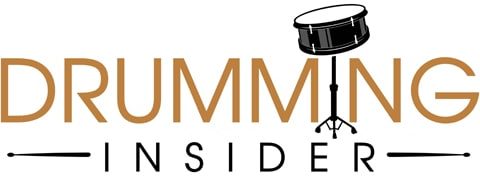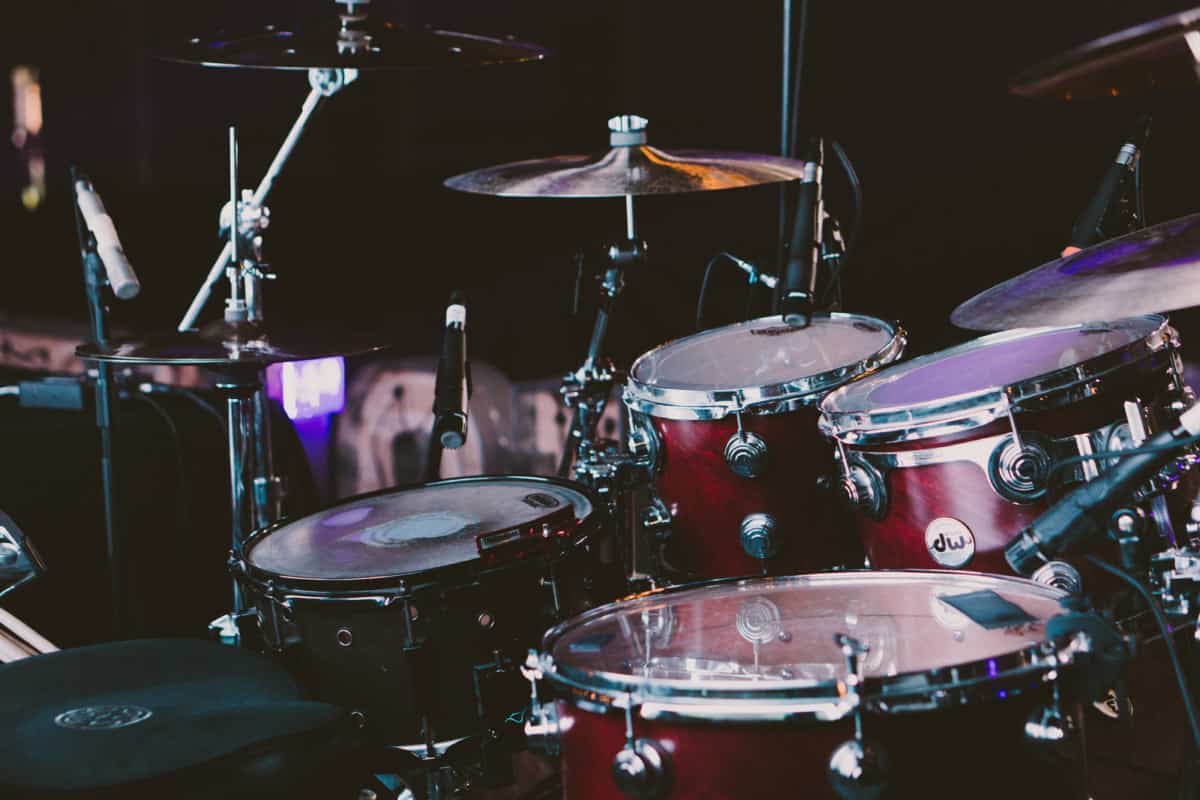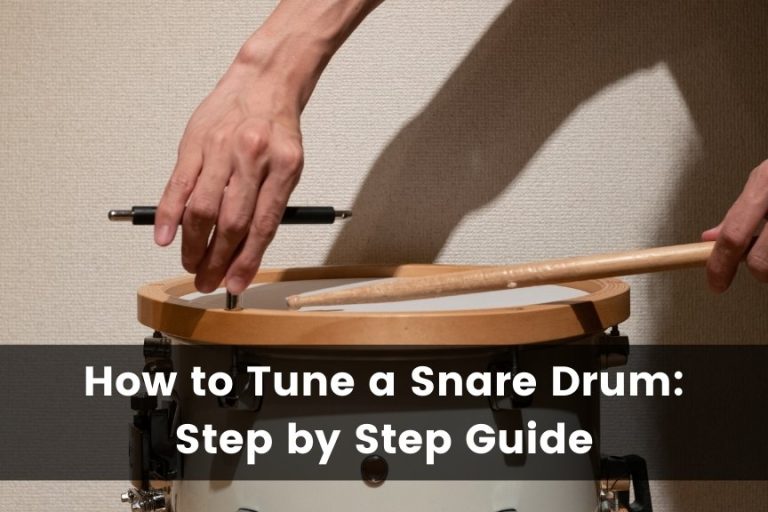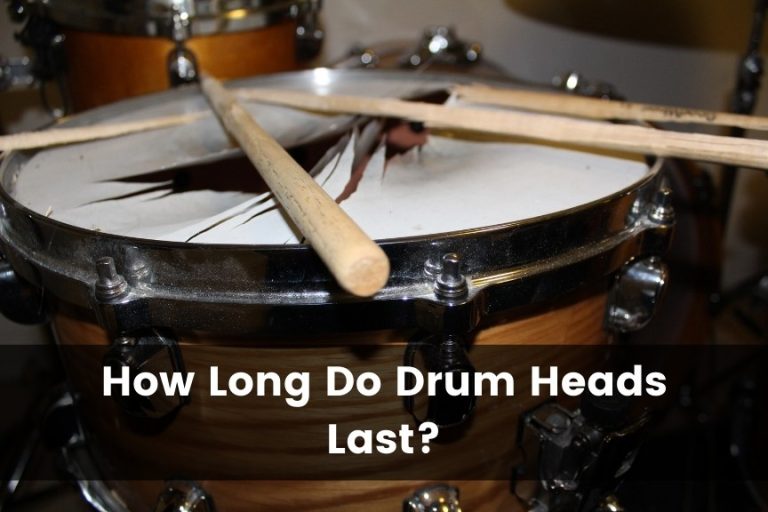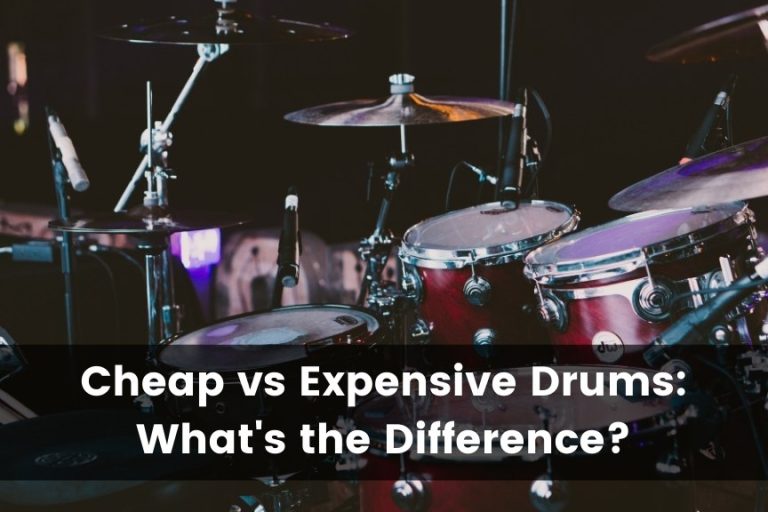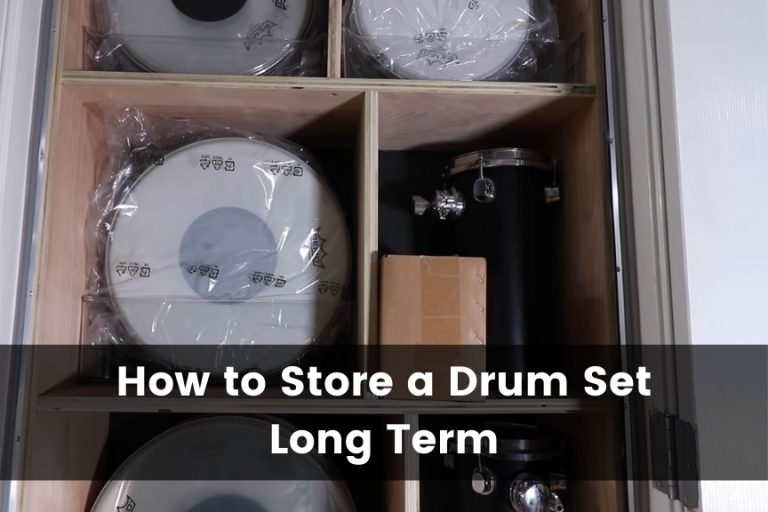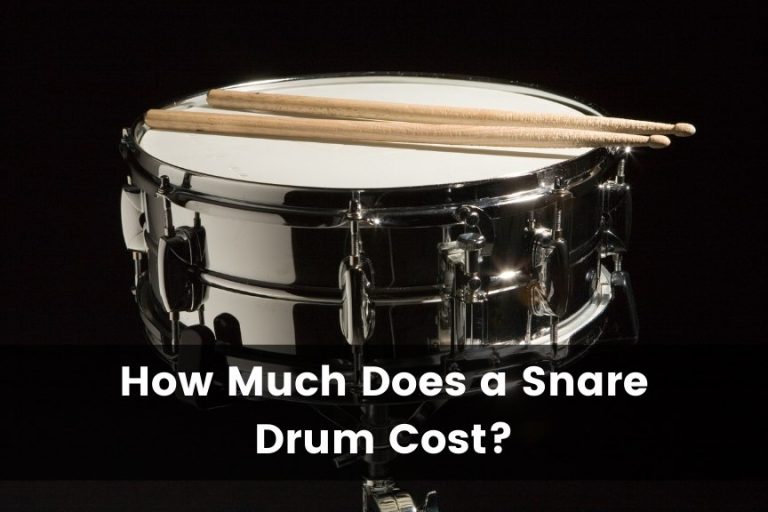How Much Does a Good Set of Drums Cost?
As you progress further along your path as a drummer, increasing your skill level steadily and the urge to creatively explore new sounds along the way, you might consider an upgrade of your current kit setup. Of course, this blog article is also for beginner drummers who just want to inform themselves before investing in a drumkit.
Good beginner drumsets cost around $500, intermediate drumsets are between $700 to $1500 and professional kits start at about $1500. Price factors are the number of shells, shell quality, hardware inclusion, if it’s custom-built or hand made. Used drums often are good quality for way cheaper.
When looking to get a good set of drums, there are a variety of options to choose from. Mainly, what you eventually get depends on the amount of money you are willing to spend. There are a bunch of things to consider. Let’s hop right into it!
It’s All About the Budget
Hasn’t it always been that way? Because mostly, the overall quality of the drums is closely tied to the price tag, I will divide up the market of drums into three categories. A basic rule of thumb would be: The more you pay, the more you get.
This doesn’t mean that beginner drum sets are useless. The difference between the categories is that as a beginner, you have fewer expectations and thus tend to be happier with less quality equipment, compared to the expensive products. There are always great products at a good price.
A Good Quality Beginner Drum Kit
When looking for a beginner drum set, you’re probably starting out (or buying it for someone who is starting), and you’re not yet sure if it’s the right investment.
What I often see and really makes me sad is that people buy really cheap drums – with affordable cymbals and hardware, of course – and expect to have fun playing when the price was not even $300 or $400. It goes without saying that you would have more pain than pleasure with this instrument. That’s why it is so crucial to pay attention to quality at this step. If you purchased the right product, it might very well stick with you for the rest of your life.
For a beginner drum kit, I recommend getting one that already comes with a basic set of cymbals and hardware. This will get you everything to get you started and playing.
To get a beginner drum kit that sounds really well for the price and is fun to play and learn on, I recommend spending around $500. That can be a set like the Pearl Roadshow or Mapex Tornado.
When purchasing such a kit, you will get the basic shell set with a bass drum, snare and three toms, hi-hats and 1-2 cymbals. The hardware usually includes the stands for the snare drum, the hi-hats, and the crash and/or ride cymbal(s).
The drum shell quality is good for that price point. Many drum sets in this category are made of Poplar. Poplars grow very fast and their wood has a medium degree of hardness. Especially in the production of cheaper sets, poplar wood has become widely accepted. If, however, the edges of the burrs are adequately worked, the shell is decently round and the workmanship allows proper tuning, then you, as a beginner, will not notice any difference.
The hardware quality is also good. It won’t be really awesome and critical places might break after a few years, but that’s normal; nothing you should complain at that price. You can always upgrade your hardware if needed.
My tip: Make sure to get the drums tuned right and they sound just fine. If you don’t know how to do that, ask your drum teacher or at a local music store.
A Good Quality Intermediate Drum Kit
Now we’re talking about one level up. At his point, you’ve probably already played for a few years. Either you already own a beginner drum set and want to upgrade or you just have the budget of a more expensive kit. At this point, we are starting to take drumming more seriously and perhaps do some home recording.
For an intermediate drum kit, you will spend between $700 and $1500. For that price, you will get a better quality drum set. Examples of suitable intermediate drum kits are the Pearl Export, Mapex Storm, Yamaha Stage Custom Birch.
The first drum set I got was a no-name brand but was around $700 and came with robust hardware and pleasant sound. This thing still lasts for more than a decade.
From this point, you’ve got to start mixing and matching a little bit. When buying your drums brand new and cymbals come with it, they are of a higher quality than with the beginner sets. BUT: Often, cymbals are not included when buying more top-priced sets. This might sound counter-intuitive but the purpose is neat: The further you progress with time, the more you would like to explore other sounds and change it up how you want since you now start to get an idea of what your drums should sound like. This way, you gain more flexibility to use the products you find perfect.
What’s more, because of the mentioned will to discover one’s own sound by experimenting a lot, a popular option is to consider replacing the default snare drum with one that you actually love. If you are 100% happy with the one included, that’s cool, just stick with it!
Generally, intermediate type of drums can make you sound professional which, in turn, make you able to do some cool home recording projects.
A Good Quality Professional Drum Kit
For professional purposes, you’ll probably want to gear up a further notch.
Starting at around $1500 until up to $5000 (or even more) you will get a drum set with which you don’t need to worry about quality since they’re built with high-quality wood and components. They are made to withstand extensive travel and movement, as well as playing. At this price range, it’s more of a question of what exact sound you are looking for.
The drum shells are made of different woods, have different amounts of plies, diverse types of finishes and other components. It is most common when buying expensive drum kits that they only include a shell set. This consists of the bass drum and toms.
Since most professionals will choose to purchase a shell set, they add hardware, specific drums or cymbals that they feel are necessary. Regarding the amount of money that adds up to that is about $900 for a quality set of cymbals and $350 – $400 for a hardware set.
Different Types of Drum Sets
Before, I didn’t write about a specific type of drum set just to keep the issue simple. When not referring to a specific type, most people are talking about a rock drum set.
Rock
Having a rock kit will not necessarily mean it is specifically designed for playing in a rock band. This is the most popular kit on sale, with the general size for a rock kit being a 22″ kick drum, 12″ and 13″ hang toms, 16″ floor tom, and a 14″ snare to provide a louder attack. This arrangement is usually popular with harder players and is often used in louder, rocking music.
However, your rock kit may also have a 22″ kick drum, 10″ and 12″ hang toms and a 14″ floor tom, giving it a similar tone to the fusion kit, but with a louder, deeper bass drum sustain. Because the toms have a louder tone, they add to the large rock cymbals that you can use to accompany your kit.
Fusion
I believe their higher pitch makes them more prominent in a performance. The fusion kit consists of a standard 20″ kick drum, 10″ and 12″ hang toms, 14″ floor tom, and a 14″ snare drum. It is possible to add larger toms, but in general, the smaller the toms, the better they match the fusion tone of the kit.
Despite the fact that they can be quieter, they also make a great compact set for drummers that are constantly on the road. You may have rock-fusion or jazz-fusion, etc., all depending on what tone you are aiming for. Often this is down to the wood that the shells of the kit are made of.
The majority of the acoustic drum kits are all available in a fusion specification, such as the Yamaha GigMaker and Mapex Horizon.
Jazz
For jazz drummers, there is a tendency to have smaller kits, but use many more sounds in each of their pieces. As far as I can see, many jazz drummers use a 14″ wood snare, 12″ rack tom, 14″ floor tom, and 18″ or 20″ bass drums. Their drums are tuned up trying to achieve a much more open sound where each drum can fully decay (bottom/top about equal). The coated heads appear to be dominant, probably because of their warm character and their rich overtones.
Although the cymbal sizes are similar, the jazz drums will not contain any one-trick trivialities such as splashes and crashes but will instead rely on cymbals that can sing a hundred and one notes to meet all requirements. Thin cymbals are preferred for their thorough washing. You will hear dry cymbals that have a clear but not pingy stick definition as well as many cymbals with pins that pull the wash out even longer.
The cymbals have much more character, as well as the whole kit does. You could say it has more “taste”.
What Kit Is Best For Me?
At this point, it’s crucial to know what you want: Are you just starting out or do you have a specific sound in mind that you want to express best with your new drum set?
When starting out, having no idea about your preferred drum sound, and you don’t know what you want to learn in the future, you probably also won’t spend much money on your kit by looking for a used one. In this case, I would say it is not that important if it’s a rock or a fusion kit (although I won’t recommend a jazz kit in this scenario). As long as it’s in good condition, you’ll be fine for a start.
It can also be a smart move to ask your drum teacher for recommendations. If he teaches more rock music, then buy a standard rock kit. If it’s more of a jazz type of guy and you want to learn jazz, get a jazz kit. Obviously, this only applies when you want to learn what your teacher teaches you. Simple, right? 😀
If, on the other hand, you have an idea of how your kit should sound, it’s beginning to get a little more specific. Generally though, if you are searching for a louder sound and deeper tones, get a rock kit. When searching for the complete opposite, get a jazz kit for more articulate sound. The fusion kit would be in the middle of both styles.
Apart from choosing between already existing sets, you can always order a custom drum set exactly with the shell sizes, woods, components, etc. that you like – when having large enough budget.
Different Shell Materials
Plywood Is Most Common
Although manufacturers keep experimenting with alternative materials (e.g. acrylic), the majority of drum shells are still made of wood. Two methods have proven to be successful in the production process: The use of solid wood and working with layered wood, the so-called laminate (plywood).
The use of solid wood has a long tradition (since the beginning of the 19th century), but the process is very time-consuming and expensive and therefore hardly found in the mainstream nowadays. Not least in order to be able to satisfy the constantly increasing demand, manufacturers looked for alternatives and found them in the use of plywood.
The manufacturing process, in which the used woods are cut, diagonally layered and overlapping, glued and sealed under pressure in molds, guarantees a very good quality in terms of rounding, sound, and handling of the finished shells.
The finished product is also in no way inferior to solid wood shells in terms of durability and acoustic properties. No wonder that top manufacturers such as Tama, Sonor, Yamaha, Pearl or Gretsch have been relying primarily on laminated shells for years.
By the way: Drum manufacturers give different names to their respective shell manufacturing processes. But the basic approach is almost identical!
Okay, so the process allows a faster, more precise production of absolutely round shells. But what about the sound characteristics of the woods used? Do their individual characteristics remain one to one even with laminated materials? A question that is often asked and can be answered with a clear “yes”. Reason enough to take a closer look at the sound characteristics of the woods used.
| Maple | Maple is the most popular of all woods used in boiler construction. Maple shells deliver a soft, warm tone with accentuated lower frequencies and balanced mids and highs. They sound very clear and support a wide tuning spectrum with very good all-round characteristics. |
| Birch | Birch is a very dense, robust wood. Compared to maple, it has a slightly more aggressive, brilliant tone with a very intense projection. Pronounced lows and highs give the shells a high presence with well-balanced mids, thus ensuring enormous assertiveness. |
| Beech | … is just as hard as birch, but its coarser grain gives more pressure, especially to the mid and lower frequencies. Beech shells offer a powerful, lively sound. If you are looking for the precision and power of birch and the openness and warmth of maple, beech is certainly a real alternative. |
| Oak | Oak is known for its uncompromising durability and represents a real alternative to standard materials, both visually and sonically. Its sound is clear and very present, yet harmonious and round at all times – the perfect set for live gigs. |
| Mahogany | For over 50 years, mahogany was the standard in shell construction. Nowadays this rather expensive wood is unfortunately used less often. Due to its distinctive basses, soft mids and very soft highs the sound of mahogany shells appears very warm and sonorous but still has a rich punch. The mid and treble structure is similar to maple. But because of the pronounced bass response, the sound appears even warmer. |
| Poplar | Poplars grow very fast and their wood has a medium degree of hardness. Especially in the production of cheaper sets, poplar wood has gained acceptance and is used here as an alternative to such popular materials as maple or birch. Soundwise, poplar shells go in the direction of birch and mahogany. Poplar is often used in combination with more expensive tonewoods. Here the inner layers are made of poplar, the outer layers of maple or mahogany. |
| Basswood | Also, basswood is a relatively cheap, fast-growing wood. Some drummers compare its sound with maple, others with mahogany. Sound is, after all, a subjective matter. The fact is that shells made of basswood offer a very good price/performance ratio and are not only convincing for beginners! |
Should I Get a Used Drum Set?
Generally, I wouldn’t advise against it. But it might be an issue since you can never really trust private sellers as much as your local music store or manufacturers in terms of the current quality of the kit.
But, used cymbals, drums or hardware that is in good shape might only cost about 50-70% as much as new.
As far as prices are concerned for an intermediate drum set, you would spend about $150 to $200 per quality cymbal or hi-hat set. A used 4-piece set should be easy to find for $500 or less, and simple used hardware for this set could set you back $200. Ergo, you could get a basic drum set suitable for a professional for $1000.
My recommendation is rather to buy a higher quality used drum set at a lower price than a new one that costs more for less value.
As long as you know how to inspect a used drum kit for any quality flaws, you’re good to go bargain hunting. If not, get a friend who knows this stuff of maybe your drum teacher offers to check it for you.
Things to Be Aware Of
In the end, I would like to share my best tips with you on your way. Those are:
- Don’t blindly buy the bestseller off Amazon. This might be sooo tempting in view of the fact that they’re so cheap. If you are willing to test how little fun playing drums on a poor quality set can be, then there you go. In the long run, I personally can only stand it with sets that scratch the $500 mark (for new ones).
- Don’t buy used drum sets if you’re not well informed. Used drum sets often have excellent value for money. Unfortunately, not every seller deals with possible defects transparently or is not aware of them. If you’re not well informed about this topic, take a person with you who is. Otherwise, I’d advise buying your set at your local music store.
- Tuning makes a huge difference. Tune your drums properly! This is a whole bigger topic, but the least I can say is: Even an expensive kit can sound like garbage when not tuned well. Likewise, you can make a cheaper kit sound excellent with the tuning done right.
- You might have to get some more stuff. This is true when buying a new drum set and is especially relevant for beginners who haven’t yet owned a drum set. So, make sure to also get a drum throne, sticks, and a good pair of earplugs.
